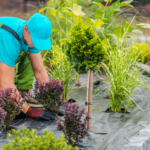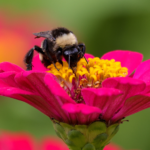Composting is one of the easiest, most eco-friendly ways to reduce household waste and improve your garden’s health at the same time. And the best part? You don’t need to buy an expensive setup—you can build a DIY compost bin at home using basic materials and a little creativity.
Whether you live in a house with a yard or a small apartment with a balcony, there’s a composting method for you. Here’s how to get started, step by step.
Why Compost at Home?
Composting turns food scraps and yard waste into rich, fertile soil that helps your plants grow stronger and healthier. It also:
- Reduces landfill waste
- Cuts down on methane gas emissions
- Saves money on fertilizers and soil
- Supports a more sustainable lifestyle
It’s simple, effective, and your garden will thank you for it.
What You Can and Can’t Compost
Before you build your bin, it’s important to know what goes in and what stays out.
✅ What to Compost:
- Fruit and vegetable scraps
- Coffee grounds and filters
- Eggshells
- Tea bags (without staples)
- Grass clippings
- Leaves and small branches
- Shredded newspaper or cardboard
❌ What Not to Compost:
- Meat, bones, or dairy (they smell and attract pests)
- Greasy or oily food scraps
- Pet waste
- Diseased plants
- Glossy paper or plastic-coated materials
The key is to balance “greens” (wet, nitrogen-rich) and “browns” (dry, carbon-rich) for efficient composting.
Step 1: Choose Your Compost Bin Style
You can build a compost bin based on your space, needs, and DIY comfort level.
💡 Easy DIY Compost Bin Options:
- Plastic Storage Bin: Great for small spaces or patios
- Wooden Pallet Bin: Ideal for larger yards—cheap and easy to assemble
- Trash Can with Holes: Works well for rotating compost (aka a mini tumbler)
- Wire Mesh Enclosure: Simple and breathable—good for dry climates
Let’s focus on a simple and effective one: the plastic storage bin method.
Step 2: Build a Simple Compost Bin Using a Plastic Storage Bin
🧰 Materials:
- 1 large plastic storage bin with lid (18–30 gallons)
- A drill or something to poke holes
- Optional: bricks or wood blocks to elevate the bin
🛠 Instructions:
- Drill holes in the sides, bottom, and lid for airflow and drainage. Space them every 2–3 inches.
- Elevate the bin off the ground using bricks or wood blocks to improve ventilation underneath.
- Layer materials inside: Start with dry browns (leaves, paper), then greens (food scraps), and alternate.
- Add moisture if it’s too dry—compost should feel like a wrung-out sponge.
- Stir or shake the contents every few days to help it break down evenly.
Step 3: Maintain Your Compost Bin
Composting is easy once you get the hang of it. Here’s how to keep your bin healthy and efficient:
🔁 Stir Regularly:
Mix your compost 1–2 times per week to keep oxygen flowing.
💧 Check Moisture:
Too dry? Add water or fresh greens.
Too wet? Add paper or dry leaves to absorb excess moisture.
⚖️ Balance Materials:
Aim for a 2:1 ratio of browns to greens. This helps control odor and speeds up decomposition.
🕰 Be Patient:
Composting takes 1–3 months depending on temperature, ingredients, and frequency of mixing.
Step 4: Use Your Finished Compost
When your compost is:
- Dark brown or black
- Earthy-smelling
- Crumbly and soft
…it’s ready to use!
🌱 How to Use It:
- Mix into garden beds
- Add to potted plants
- Sprinkle over lawn or flower beds
- Use as top dressing for vegetables and herbs
Your plants will love the natural nutrients and improved soil structure.
Final Thoughts: Start Small, Grow Big
Creating a DIY compost bin at home is one of the simplest ways to make your life (and your garden) more sustainable. You don’t need fancy tools or a big yard—just a bin, your food scraps, and a bit of patience.
Once you see how easy it is, composting becomes second nature. And with every banana peel and coffee ground you recycle, you’re building better soil—and a better planet. 🌍🌿



